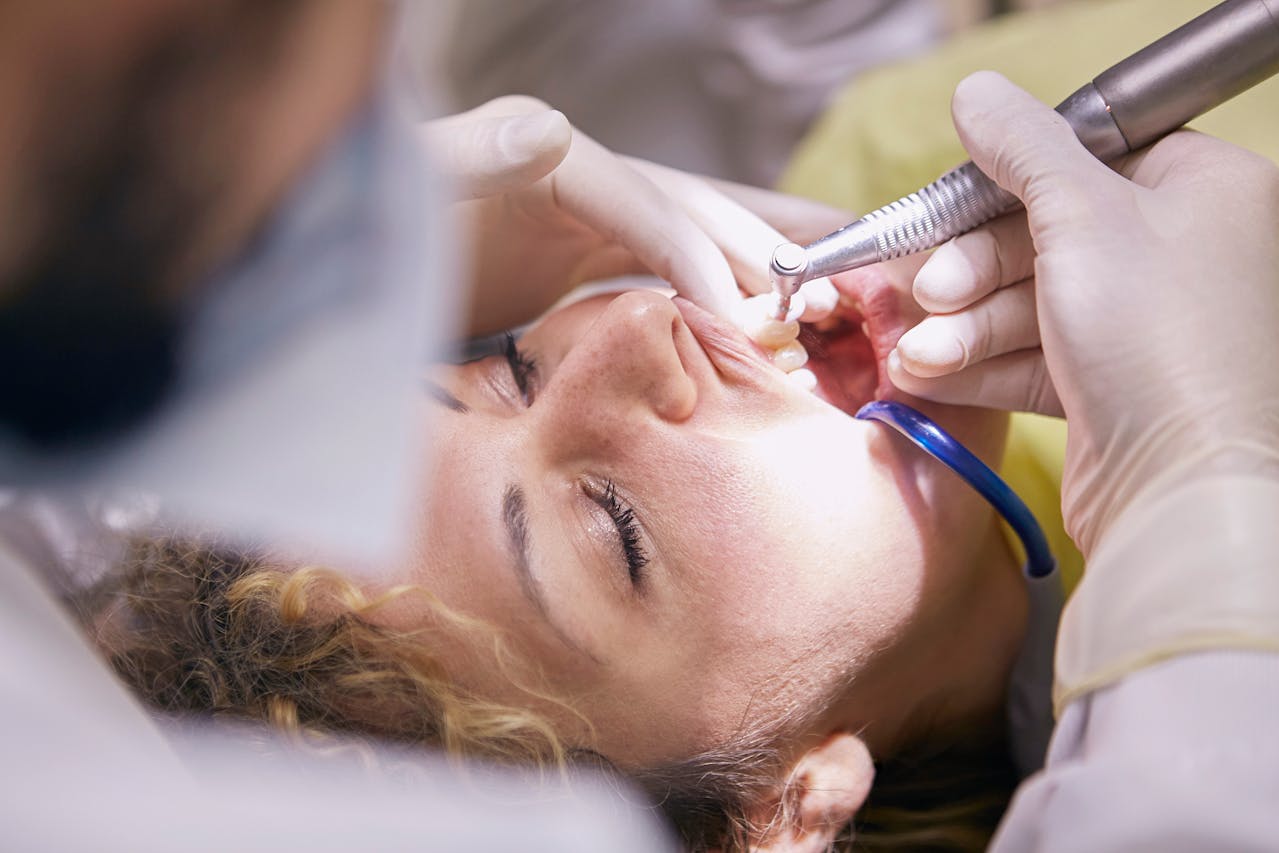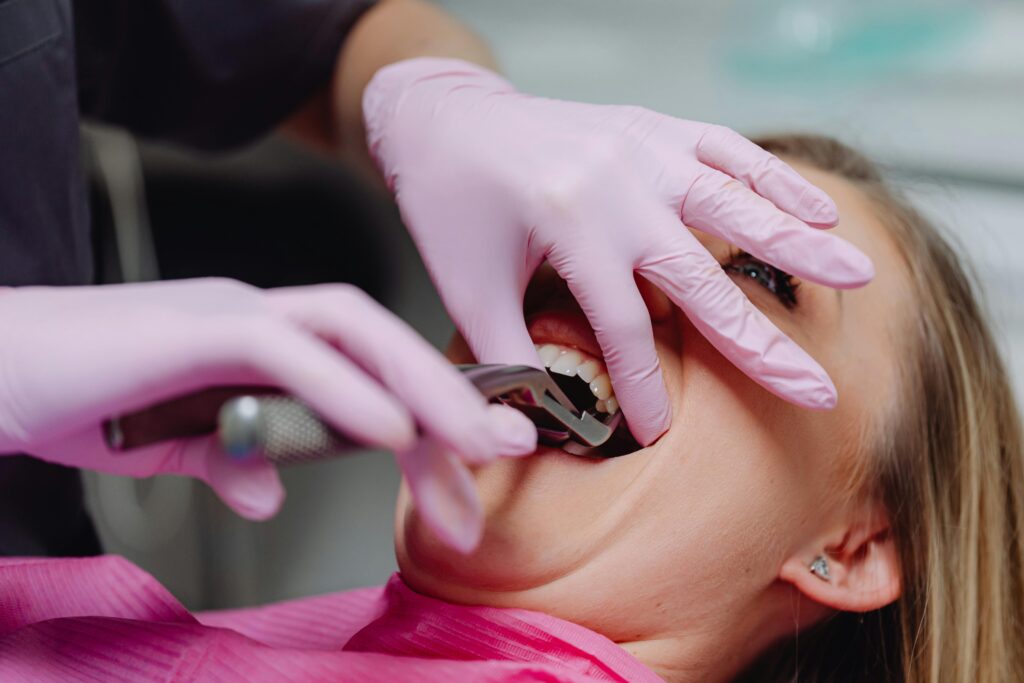Table of Contents
ToggleWhen you have a wisdom tooth removed, you might encounter a condition known as dry socket. This complication occurs when the blood clot that should form in the extraction site either fails to develop or becomes dislodged. Without this clot, the bone and nerve endings are left exposed, which can lead to discomfort and a delay in the natural healing process.
After a wisdom tooth extraction, the body works hard to form a protective layer in the socket. If this process is disrupted, the healing tissue does not develop as it should, and pain may set in within a few days after the procedure. The sensation can be sharp and lingering, and it might spread to nearby areas such as the jaw or ear. Taking time to understand the condition can ease your worries and help you follow the proper post-extraction care instructions.
What Is Dry Socket?
Dry socket, medically known as alveolar osteitis, occurs when the protective blood clot is either dislodged or fails to form in the extraction site. This exposure leaves the underlying bone vulnerable to irritation and infection. The pain associated with dry socket may not be constant at first; it can build gradually over the first few days after the extraction. Patients often describe the discomfort as a deep, throbbing ache that radiates beyond the original extraction area.
In some cases, an unpleasant taste or odour in the mouth may accompany the condition. The appearance of the socket can be alarming, as it might look empty or show signs of exposed bone. These symptoms serve as a signal that the normal healing process has been disrupted. Dental practitioners in Australia are adept at identifying these signs and can advise on the best course of action, ensuring that your recovery stays on track.
Causes of Dry Socket
Several factors can contribute to the onset of dry socket after affordable wisdom teeth removal Sydney. One common cause is the premature removal or dissolution of the blood clot. Vigorous rinsing, spitting, or sucking through a straw in the days following your extraction can create enough pressure to dislodge this delicate clot. Smoking is another significant factor; the chemicals in tobacco and the act of inhaling can interfere with clot formation.
Infections or a history of gum disease may also increase the risk. Some extractions are more complicated than others, and when the tooth is deeply embedded or positioned awkwardly, the risk of developing dry socket rises. Your dentist may caution you about these risks before the procedure. Being aware of these contributing factors is a useful step in reducing the likelihood of experiencing the condition. Careful adherence to post-operative instructions is highly recommended for anyone who has undergone a tooth extraction.
Signs of Dry Socket
If you suspect dry socket after a wisdom tooth extraction, watch for these symptoms:
- Severe, throbbing pain that develops 2–4 days after the extraction.
- Pain that radiates to the jaw, ear, eye, or temple on the affected side.
- Visible empty socket where the blood clot is missing or partially dislodged.
- Exposed bone in the extraction site.
- Unpleasant taste or bad breath that does not improve with oral hygiene.
- Increased sensitivity when drinking cold water or eating.
If you notice these signs, contact your dentist promptly for treatment.
How to Prevent Dry Socket
There are several steps you can take to help protect yourself against dry socket after a Wisdom teeth removal Sydney. In fact, prevention is always better than cure, and there are several steps you can take to reduce your risk of developing dry socket after wisdom tooth extraction.
Follow Your Dentist’s Instructions: Your dentist will provide specific aftercare guidelines, such as avoiding vigorous rinsing, not smoking, and eating soft foods. Adhering to these instructions is key to a smooth recovery.
- Maintain Good Oral Hygiene: Gently brush your teeth and rinse with a saltwater solution as recommended by your dentist. Avoid the extraction site while it heals.
- Avoid Smoking and Alcohol: Both can delay healing and increase the risk of dry socket. If you smoke, try to quit or at least refrain for a few days before and after the procedure.
- Be Mindful of Your Diet: Stick to soft foods like yoghurt, mashed potatoes, and soup for the first few days. Avoid hot, spicy, or crunchy foods that could irritate the wound.
- Stay Hydrated: Drink plenty of water, but avoid using straws, as the suction can dislodge the blood clot.
Treatment Options for Dry Socket
Should dry socket occur, timely treatment is key to managing discomfort and promoting healing. When you notice symptoms such as severe pain or an unusual appearance in the socket post wisdom teeth Sydney removal, contacting your dentist immediately is the best course of action. Dry socket is treated in the following ways: –
- Professional Cleaning: Your dentist will clean the socket to remove any debris or bacteria that could be causing the pain.
- Medicated Dressings: A special dressing may be applied to the socket to promote healing and provide pain relief. This dressing may need to be changed regularly until the socket heals.
- Pain Management: Over-the-counter pain relievers like ibuprofen can help manage the discomfort. In some cases, your dentist may prescribe stronger medication.
- Antibiotics: If there’s an infection, your dentist may prescribe antibiotics to clear it up.
Recovery from dry socket usually takes about 7-10 days with proper care. During this time, continue to follow your dentist’s instructions and avoid anything that could disrupt the healing process.
Dental Options in Australia
Many Australians are mindful of the expenses involved in dental procedures, and it is common to compare different treatment options before proceeding. Some patients enquire about the Wisdom teeth removal cost Sydney to understand what their treatment plan might involve. It is not uncommon for individuals to research the cost of wisdom teeth removal Sydney when looking for an option that fits within their budget.
Local practices provide detailed explanations of the procedure, addressing concerns about recovery and potential complications like dry socket. Information regarding the wisdom teeth removal price Sydney can be a useful reference when planning your treatment. Evaluating your options carefully, in consultation with your dental professional, can lead to a treatment plan that suits both your health needs and your financial considerations.
A Final Thought
Dry socket can be an uncomfortable setback after a wisdom tooth extraction, yet a clear understanding of the condition and careful adherence to post-operative care can make a significant difference. By being aware of what triggers dry socket and following the guidelines provided by your dentist, you are taking practical steps toward a smoother recovery. Trust in the expertise available through local dental clinics and feel confident that professional help is always within reach should any complications arise.
Taking care of your mouth after cheap wisdom teeth removal Sydney is not only about addressing pain when it occurs; it is about ensuring that the healing process is given every opportunity to proceed without interruption. Whether you are preparing for the extraction or recovering afterward, staying informed and proactive will help you regain your comfort sooner. Your dentist is there to support you throughout, providing clear instructions and treatment options that are designed to restore your well-being.
FAQs on Dry Socket After Wisdom Tooth Extraction
1. Is dry socket treatable?
Yes, dry socket is treatable. With prompt dental care, pain management, and medicated dressings, the condition improves within a few days to a week.
2. How Do I Know If I Have Dry Socket?
Signs include severe, throbbing pain, an empty-looking socket, exposed bone, bad breath, and discomfort that spreads to the jaw or ear.
3. How Long Does Dry Socket Last?
With proper treatment, dry socket typically lasts about a week, though discomfort usually begins to improve within a few days of care.
4. Can I Prevent Dry Socket After A Wisdom Tooth Extraction?
Yes, avoid smoking, using straws, vigorous rinsing, and hard foods. Follow your dentist’s aftercare instructions to support healing.
5. How Is Dry Socket Treated?
Dentists clean the area, apply medicated dressings, and may prescribe pain relief. Proper care helps the socket heal within a few days.





